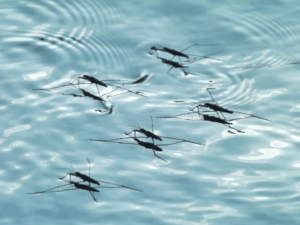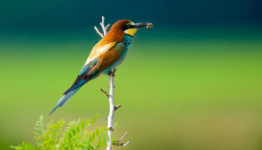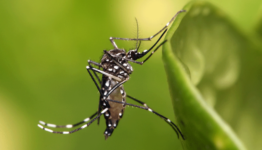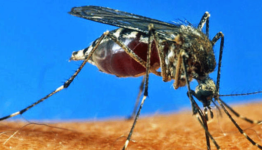Mosquitoes belong in the same order as the common fly – Diptera. The Earth is inhabited by about 3,200 of their species consisting of 39 genera. Out of these 39 genera, the Anopheles, Culex and Aedes genera are responsible for the transmission of certain infections such as Zika virus, encephalitis and malaria. Only two out of the three disease-transmitting genera are prevalent in the US. They are the Culex and the Aedes genera.
Female mosquitoes require water – whether stagnant or moving – for the laying of their eggs and breed them into adult  mosquitoes. The Culex and some species of house mosquitoes lay their eggs one on the other in long standing water bodies to make “rafts”. They usually lay up to 200 eggs per raft and exist in places having standing water bodies such as ditches, abandoned tires, decorative water bodies, birdbaths and sewage/waste water. Their eggs find it difficult surviving in moving water bodies.
mosquitoes. The Culex and some species of house mosquitoes lay their eggs one on the other in long standing water bodies to make “rafts”. They usually lay up to 200 eggs per raft and exist in places having standing water bodies such as ditches, abandoned tires, decorative water bodies, birdbaths and sewage/waste water. Their eggs find it difficult surviving in moving water bodies.
Meanwhile, the Aedes mosquitos as well as other types employ differing methods of breeding. For example, the Asian tiger mosquito and the treehole mosquito breed in water formed in an enclosed space while the Floodwater mosquitoes breed in areas that are prone to flood so that the eggs can metamorphose when the flood comes. The distinguishing feature between the breeding of these mosquitoes and that of the Culex is that while the latter is able to lay up to 200 eggs at a go, the former lays only an egg at a time.
THE MOSQUITO CYCLE
The mosquito cycle, which is usually in water, lasts from four to thirty days and is described below
Egg: This is laid by the female mosquito in water bodies or places determined by the breeding habits of the species in question.
Larvae: The eggs hatch into larvae within a time interval of just a few days. These larvae which are also known as wrigglers usually feed on the microorganisms or organic matters found within the water bodies wherein the eggs are laid.
Pupae: Mosquitoes in this stage are also known as tumblers and do not feed as the larvae do. They are usually enclosed in cases known as cocoons. The duration of the pupae stage ranges from two days to a week.
Adult mosquito: After the above stages of development, the mosquito becomes an adult one and can now survive outside the water body on blood (if they are female mosquitoes) and nectar from fruits and flowers. While the male adults hardly survive a fortnight, their female counterparts can live up to a month or two.
DETECTING MOSQUITOES
The presence of a mosquito at any stage is very hard to miss despite the fact that their adults are sometimes mistaken for midges, mayflies, crane flies and even dragon flies. You can hardly miss their larvae which are usually small white worms wriggling just underneath the surfaces of many stagnant water. Their adults are prone to fly in groups around dusk and dawn before hunting for food. They have two wings just like their counterparts and a lot of them possess whitish bands around their legs and abdomen. Now don’t tell me you don’t hear that annoying whining sound they make while searching for mating partners.
GETTING RID OF MOSQUITOES
All stages in the mosquito’s life cycle should be properly handled if the mosquito’s population is to be significantly controlled. Certain measures, as described below, can be taken for this control. Containers, tires and even buckets that store water for a long time should either be emptied or properly covered to avoid creating a suitable habitat for the mosquito to breed. Those (containers) that are required to keep water such as birdbaths and pet bowls should be cleaned and refilled on a daily basis if possible so as stop eggs from hatching in them. Also, including a dynamic feature to decorative water bodies prevent mosquitoes from laying their eggs in them. Insecticides, though temporary, can also reduce the population of mosquitoes. While larvicides terminate the development of the larvae, adulticides kill the adult mosquitoes and prevents them from procreating.











